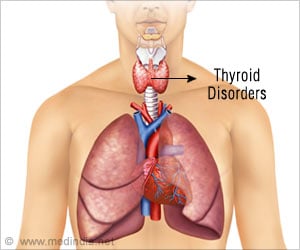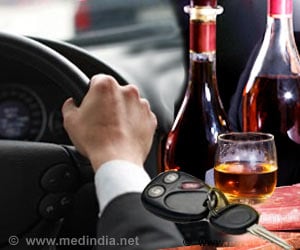About one-third of young adults in US have been in a vehicle with a driver impaired by alcohol or drugs like marijuana.

‘Young adults riding with impaired drivers who were under the influence of marijuana or alcohol have increased.’





"Parents should be a role model by not driving while impaired, and real friends should stop their friends from driving after using substances -- if using substances cannot be stopped," said Kaigang Li, Ph.D., M.Ed., a Colorado State University assistant professor of health and exercise science.In their investigation, researchers at Colorado State University, the Colorado School of Public Health, Yale University, and the Eunice Kennedy Shriver National Institute of Child Health and Human Development of the National Institutes of Health used data from Waves 4 and 5 of the NEXT Generation Health Study, collected in 2013 and 2014. Young adults at one and two years after graduating from high school were asked about a variety of health topics, including risky behaviors surrounding substance use.
Questions included, "During the last 12 months, how many times did you ride in a vehicle driven by someone who had been drinking alcohol?" The question was repeated for marijuana use and illicit drug use (including ecstasy, amphetamines, opiates, cocaine/crack cocaine, glue or solvents, LSD, or anabolic steroids). The answer "at least once" was given by 23 percent of respondents for a marijuana-impaired driver, 20 percent for an alcohol-impaired driver, and 6 percent for a driver impaired by other illicit drugs.
"We’ve put a lot of emphasis on drinking and driving, but less effort on driving under the influence of marijuana," Li said. "Maybe we need more of the latter."
One factor that made this study unique was that participants were also asked who the impaired driver was: a friend or relative about the same age, an unknown or little-known person around the same age, an older relative, an older known adult, or an unknown older adult. The risk of riding with an impaired driver was much higher for peer drivers than for older adult drivers (21 percent vs. 2.4 percent for marijuana, 17 percent vs. 4 percent for alcohol, and 5.4 percent vs. less than 1 percent for illicit drugs).
Advertisement
"It makes me think of my daughters," he said. "My oldest is only 11, but they’ll be driving soon. If I drive after drinking, it sets an example, so they may think it’s not a bad thing. If they realize early on that driving under the influence is not good, we can reduce the chances that they will perceive it as OK in the future."
Advertisement
"These behaviors are not isolated, especially in young people," Li said. "When one risk behavior is present, it can definitely influence other behaviors. We want them to conclude that ’friends don’t let friends engage in risky behaviors.’ If they know that their friends don’t do these risky things, they won’t do it themselves."
The takeaway from the research, Li said, is that early and frequent riding with an impaired driver leads to more of this behavior in the future. And when that impaired driver is a peer, it’s more likely that their passengers will eventually become impaired drivers themselves. Li believes that there is an opportunity to reduce motor vehicle crashes, starting with the relatively passive behavior of riding with an impaired driver.
"Emerging adults are entering the transition period from being kids to being adults, so their behaviors, perceptions, knowledge, and beliefs can still be changed during this period of time," says Li. "If they realize the problem associated with risky behavior now, they can reduce that behaviour and reduce crash risk. But if they don’t, and they’re influenced by peers who are engaging in risky behaviour, that behavior becomes a habit."
Source-Eurekalert








